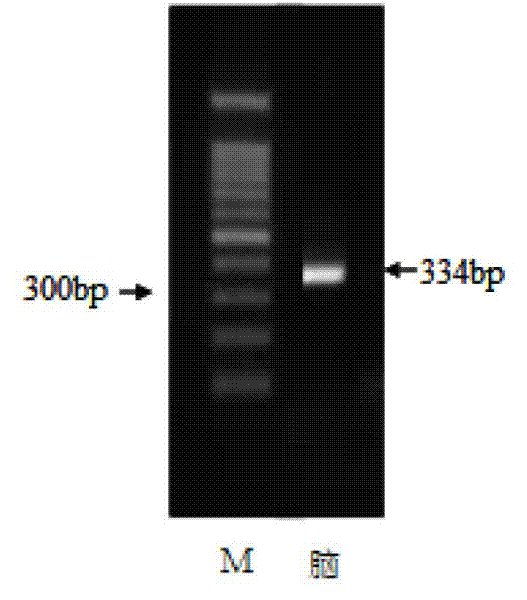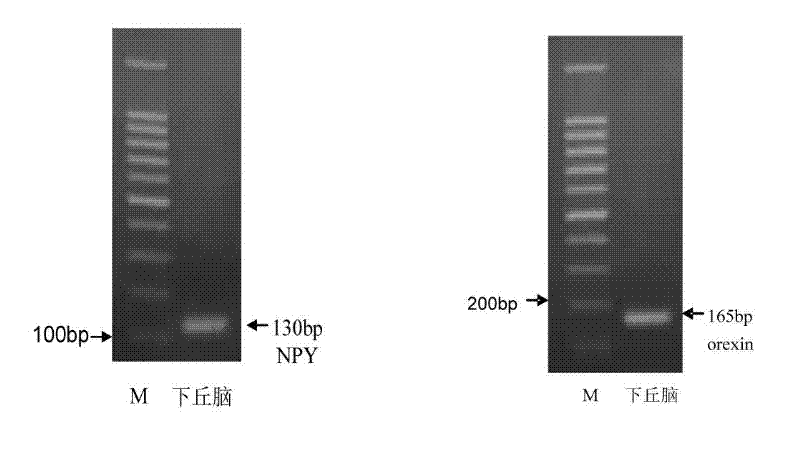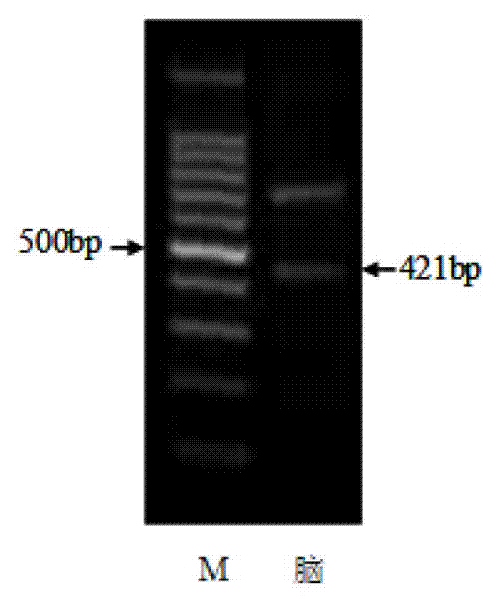Nile tilapia cholecystokinin and coding nucleic acid thereof and application of functional octopeptide
A technology of Nile tilapia and cholecystokinin, which is applied in the field of new protein and its encoding nucleic acid of Nile tilapia, can solve the problems of undiscovered tilapia feeding and gastrointestinal digestion of short peptides
- Summary
- Abstract
- Description
- Claims
- Application Information
AI Technical Summary
Problems solved by technology
Method used
Image
Examples
Embodiment Construction
[0029] The present invention uses RT-PCR and RACE techniques for cloning. First, use Invitrogen’s Trizol Reagent to extract total brain RNA, then use Toyabo’s Rever Tra Ace-a-Tm First Strand cDNA Synthesis Kit for RT-PCR, and finally use the designed degenerate primers to carry out the cDNA part of the gene Fragment cloning. After obtaining partial fragments, use the TdT tailing kit of TaKaRa Company to add a piece of dCTP to the 3' end of cDNA, design cDNA 5' end-specific primers, and perform 5' RACE together with adapter primers AAU and AUAU. The product SMART 3' RACE reverse transcriptase SMARTScribe Reverse Transcriptase from CLONTECH was used for reverse transcription, and the linker primer UPM (including Long-UPM and Short-UPM) was used for 3'RACE. Finally, specific primers were designed in the 3' and 5' non-coding regions to clone the open reading frame ORF and determine the sequence.
[0030] Below in conjunction with embodiment, further illustrate the present invent...
PUM
 Login to View More
Login to View More Abstract
Description
Claims
Application Information
 Login to View More
Login to View More - R&D
- Intellectual Property
- Life Sciences
- Materials
- Tech Scout
- Unparalleled Data Quality
- Higher Quality Content
- 60% Fewer Hallucinations
Browse by: Latest US Patents, China's latest patents, Technical Efficacy Thesaurus, Application Domain, Technology Topic, Popular Technical Reports.
© 2025 PatSnap. All rights reserved.Legal|Privacy policy|Modern Slavery Act Transparency Statement|Sitemap|About US| Contact US: help@patsnap.com



